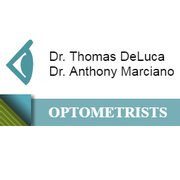How Are Farsightedness & Nearsightedness Different?

People with imperfect vision may live with one of two conditions: farsightedness or nearsightedness. Learning about these two types of vision problems can prepare you to make informed eye care choices. Dr. Thomas Deluca Dr. Anthony Marciano & Associates, prominent eye doctors in Prospect, CT, are here to explain more.
Eye Care Professionals Explain Farsightedness & Nearsightedness
What Is Farsightedness?
Farsightedness occurs when individuals struggle to see objects up close, but articles in the distance are clear. This phenomenon is often a result of having shortened eyeballs, which cause the individual to process images behind the retina instead of on it. In some cases, the condition may also be caused by an abnormal cornea or lens. Just five to 10% of Americans live with farsightedness, and it is often a genetic condition.
What Is Nearsightedness?
Nearsightedness has the opposite effect of farsightedness: people who have it can see objects clearly up close, but objects in the distance are blurry. An elongated eyeball causes this condition, forcing the eye to focus light in front of the retina instead of directly on it. Nearsightedness is much more common than farsightedness, affecting nearly a third of the population.
How Are These Issues Corrected?
 Both types of vision impairments can be corrected with the help of contact lenses and prescription eyeglasses. To determine the proper strength for their prescription eyewear, individuals who suspect a vision problem must go for an eye exam. The eye doctor will then perform a series of tests to determine the precise level of correction needed.
Both types of vision impairments can be corrected with the help of contact lenses and prescription eyeglasses. To determine the proper strength for their prescription eyewear, individuals who suspect a vision problem must go for an eye exam. The eye doctor will then perform a series of tests to determine the precise level of correction needed.
If you’re due for your annual eye exam, contact the office of Dr. Thomas Deluca Dr. Anthony Marciano & Associates. From prescription eyewear to contact lenses, these eye care professionals have everything you need to see clearly, whether you’re near- or farsighted. To schedule an appointment to stay on top of your eye care regimen, call (203) 758-4447 or send the practice a message online.
About the Business
Have a question? Ask the experts!
Send your question

